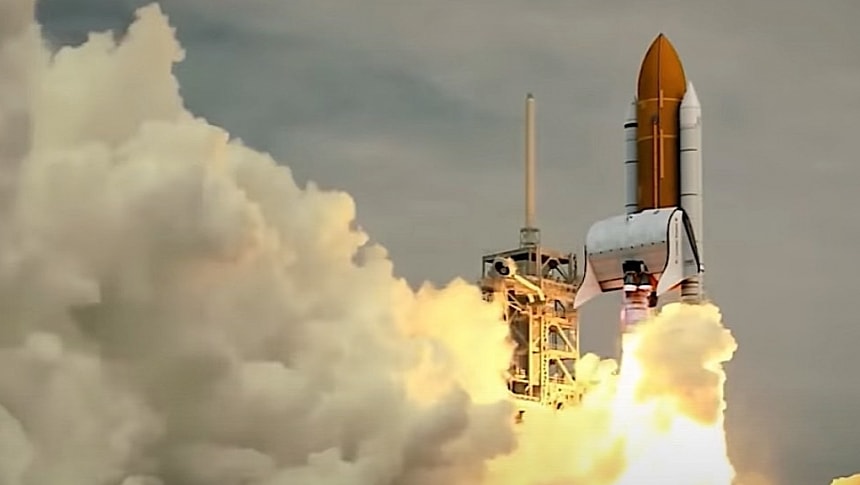The shape of a breadbox is not something that comes to mind when thinking about space exploration vehicles. Be they rockets or spacecraft, they are all pointy and streamlined. But a breadbox shape for a space shuttle is something someone really considered back in the day when the program was still young.
The early years of the space program were a hotbed for the creation of interesting designs and concepts. Thanks to modern technology, we've seen several of these ideas come to life, and there is plenty of literature on many of them. However, the Rockwell C-1057 is more mystery than anything else.
Before going bust in 2001, Rockwell was one of the biggest names in space exploration and aviation. After all, it is the name behind the Space Shuttle as we ended up having it, and the B-1 Lancer nuclear bomber.
Before rising to fame, though, the company came up with this weird shuttle design, the work of an engineer named Harry Scott.
It's an idea dating back to 1972, and it stands out thanks to the fact it is basically a cargo bay module turned on its side. The goal of this exercise was to come up with a shorter orbiter that still provided enough space for cargo to be transported to orbit.
It's unclear exactly how such a design, which makes the rocket carrying it look like a school kid with a backpack, would have benefited missions, and no one really knows how the cargo bay, it too powered by a series of engines, would have been integrated with the rocket itself.
Not much is known about the Rockwell C-1057 as it never moved past the concept stage, but the little details we have on it point to it being, somewhat surprisingly, pretty aerodynamic and, at least in theory, practical enough.
The shape of the breadbox was the focus of attention for several people and organizations over the years, with perhaps the most famous iteration being the solid-cast resin kit sold by the Fantastic Plastic Virtual Museum Store.
Until this week, though, when animation specialist Hazegrayart released a video of the C-1057 in action, we've never had the chance to properly experience the way the thing would have looked in flight.
You can have a look at what came out from this imagination exercise below this text, and you'll get to see all the stages of a space mission, from the rocket and shuttle rolling out to the pad to the actual launch and, eventually, the shuttle opening its doors to place a satellite in orbit.
The whole thing looks like it would have worked, making us (once again) sorry it never moved past the concept stage.
Before going bust in 2001, Rockwell was one of the biggest names in space exploration and aviation. After all, it is the name behind the Space Shuttle as we ended up having it, and the B-1 Lancer nuclear bomber.
Before rising to fame, though, the company came up with this weird shuttle design, the work of an engineer named Harry Scott.
It's an idea dating back to 1972, and it stands out thanks to the fact it is basically a cargo bay module turned on its side. The goal of this exercise was to come up with a shorter orbiter that still provided enough space for cargo to be transported to orbit.
It's unclear exactly how such a design, which makes the rocket carrying it look like a school kid with a backpack, would have benefited missions, and no one really knows how the cargo bay, it too powered by a series of engines, would have been integrated with the rocket itself.
Not much is known about the Rockwell C-1057 as it never moved past the concept stage, but the little details we have on it point to it being, somewhat surprisingly, pretty aerodynamic and, at least in theory, practical enough.
The shape of the breadbox was the focus of attention for several people and organizations over the years, with perhaps the most famous iteration being the solid-cast resin kit sold by the Fantastic Plastic Virtual Museum Store.
Until this week, though, when animation specialist Hazegrayart released a video of the C-1057 in action, we've never had the chance to properly experience the way the thing would have looked in flight.
You can have a look at what came out from this imagination exercise below this text, and you'll get to see all the stages of a space mission, from the rocket and shuttle rolling out to the pad to the actual launch and, eventually, the shuttle opening its doors to place a satellite in orbit.
The whole thing looks like it would have worked, making us (once again) sorry it never moved past the concept stage.









